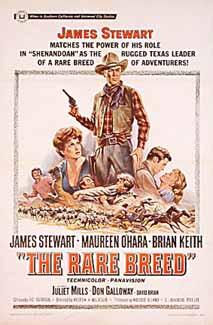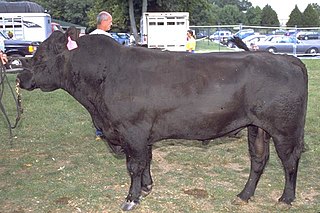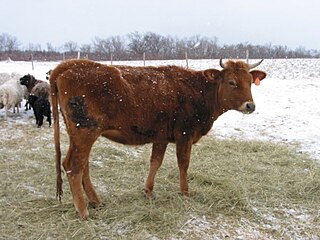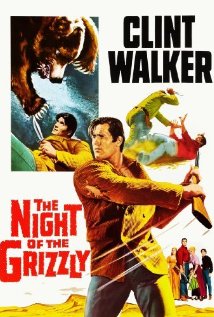Plot
In 1884, Martha Evans and her daughter Hilary sail to the United States from England, pursuing the dream of Martha's husband, who dies on board, to bring Hereford cattle to the West. They are left with Hilary's bull, a result of years of European breeding, named Vindicator. Vindicator exhibits all the gentility of breeding, including an odd willingness to follow Hilary (who had raised him from a calf) at the whistle of "God Save the Queen."
At auction, Vindicator is the object of a bidding war and is ultimately won by Charles Ellsworth, who has come to purchase stock for his partner, the wealthy Texas rancher Alexander Bowen. Sam ‘Bulldog’ Burnett, a local wrangler renowned for his ability to take down bulls, is hired to transport the bull to Bowen's ranch. Ellsworth bought the bull primarily to woo Martha, who decides to ensure Vindicator's delivery by accompanying him to his destination.
Hilary later learns Burnett has made a deal with competing rancher John Taylor to steal the bull. Hilary does not yet know that Burnett made the deal mostly to ensure an injured wrangler, double-crossed by Taylor, would receive money to take care of himself and his wife. One of Taylor's men, Deke Simons, gets into a fight with Burnett in the saloon over the terms of the journey. Martha, witnessing the brawl, comes to trust Burnett. Despite his objections, he ultimately accepts responsibility for the Evans women on the train ride to Dodge City and the following trip down the wagon trail.
One night while Evans and Burnett have finished brewing coffee over the campfire, a gunshot knocks the coffee pot out of Burnett's hand. Burnett believes this is a signal from Taylor's men. Just before dawn, Hilary catches Burnett saddling up and suspects he is about to hand over Vindicator. He denies her accusations, waking her mother to prove he was innocent. Once again, Martha gives Burnett the benefit of the doubt.
Taylor's men find a barbed wire fence that has been cut for the Evans' wagon to pass. They conclude Burnett must have double-crossed them. Simons, determined to catch up with Burnett, shoots his companion and rides after the wagon.
In a canyon, Burnett runs into Jamie Bowen, Alexander's son, who has appropriated a herd of his father's longhorn cattle as payment for his work and is running away to start his own ranch. Simons catches up with Burnett and shoots a cowhand, setting off a stampede. Jamie tries to escape, but falls in the path of the cattle and is trampled.
Battered and unconscious, Jamie is carried to the Evans' wagon. Simons is there, holding Evans and her daughter hostage. He demands the money Burnett was paid by Taylor for the bull. Simons also demands the women's money, but while distracted Burnett is able to grab his rifle. Simons mounts and gallops away; Burnett follows. After their horses collide, Simons falls onto a rock and dies.
Burnett returns with the money, to be berated by Martha for his dishonesty and the trouble he has caused. After a few days of travel, they reach the Bowen ranch.
There they are introduced to Jamie's father, Alexander Bowen, a retired Scottish military officer turned cattle rancher. He lives in a fort reminiscent of the Punjab frontier where he had served the Queen, populated by families of Mexican heritage. While Hilary nurses Jamie back to health, Martha begins teaching the local children in school. Bowen and Burnett insist the Evans women should leave for the East again before they are snowed in, but they refuse to go until Jamie is well and they have taught the men to properly care for Vindicator.
Bowen insists Hereford cattle cannot survive the tough conditions of North Texas, thus making them unsuitable for ranching. Martha and Hilary insist they can make it, and slowly Burnett comes around to their point of view. Martha, on witnessing the wildness of the longhorn cattle, realizes that until Vindicator proves himself, they will never have the men on their side. Hilary races back to the fort and releases Vindicator into the wild.
With Vindicator now on the range to fend for himself and Jamie on the mend, the Evans women announce it is time for them to go. Jamie insists he is in love with Hilary, who returns the proclamation. Martha realizes she needs to stay as well. This suits both Bowen, who realizes he is in love with Martha; and Burnett, who has known he loved Martha since they met.
A brutal winter arrives, and Burnett insists on finding Vindicator and bringing him back to shelter. Despite making repeated trips to the range, he cannot find the bull. While he is away, Bowen cleans himself up, showing Martha his gentlemanly in an attempt to woo her.
Burnett is reported missing on one of his trips. Bowen's men find him, almost frozen to death. Bowen is sure the bull is now dead, but tells Burnett he can have any calves that may have been sired by Vindicator. Burnett refuses to give up hope.
When spring arrives, Burnett resumes searching for Vindicator, hoping for calves. He begins building a new ranch, where the animals are treated better and Herefords can thrive. After finding Vindicator under a snowdrift, he still insists calves may be coming. Burnett tells Hilary that depending on how long Vindicator had survived on the range, his calves might be born as late as the beginning of October.
Reluctantly, Martha agrees to marry Bowen - but only after there is no more chance of calves from Vindicator. Burnett finds a crossbred Hereford calf and brings it back to Bowen's fort. The two men fight over Martha, Burnett declares his love for her, and Bowen gallantly steps aside.
An entire herd of Herefords is later seen, with Martha and Burnett musing they are glad they kept "a few longhorns, to remember the way it used to be." Hilary and Jamie, now married, ride up. Hilary whistles "God Save The Queen", hoping one of the cattle descended from Vindicator will respond, and claims, "Sometimes, I see a glimmer of him in one of them."

















